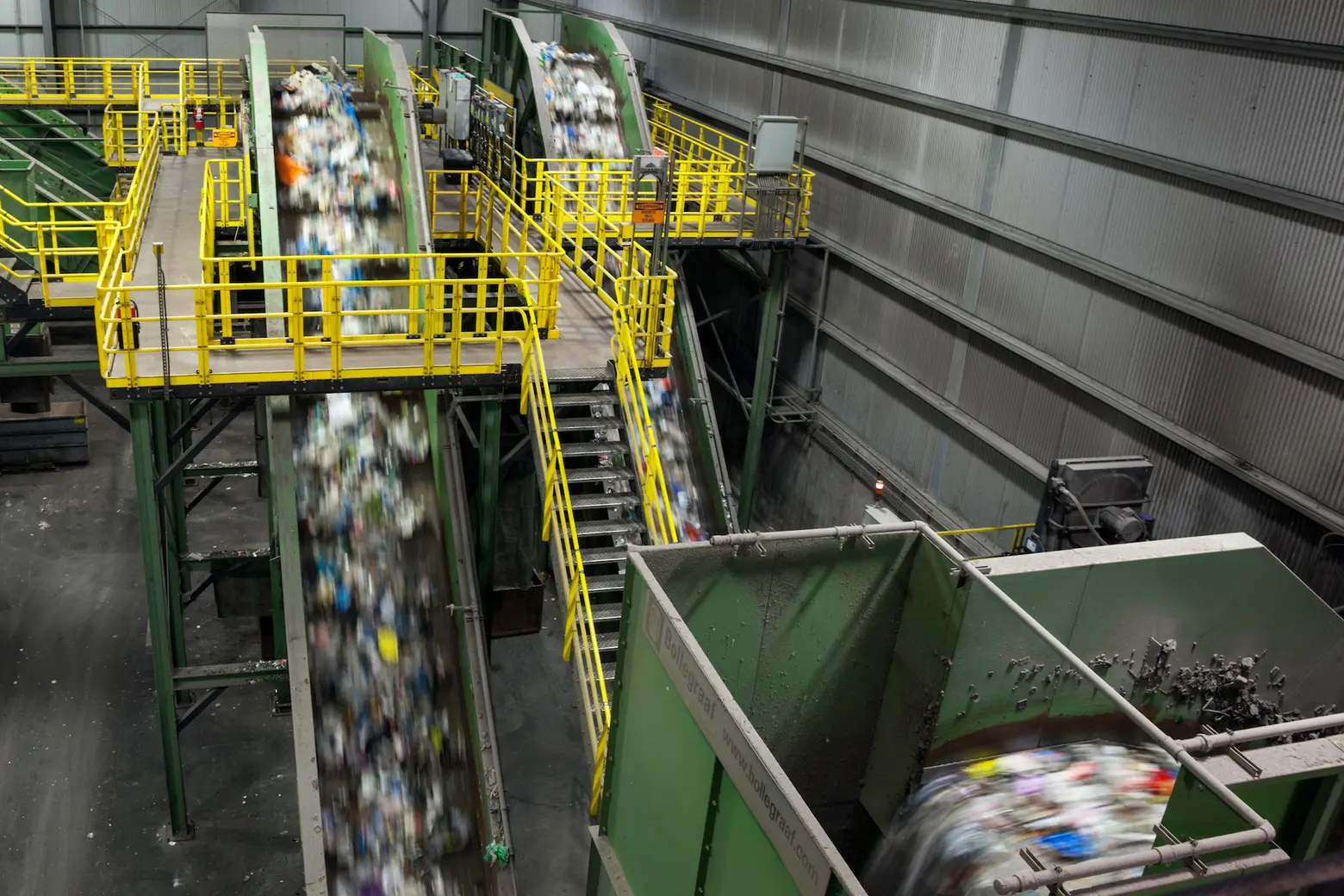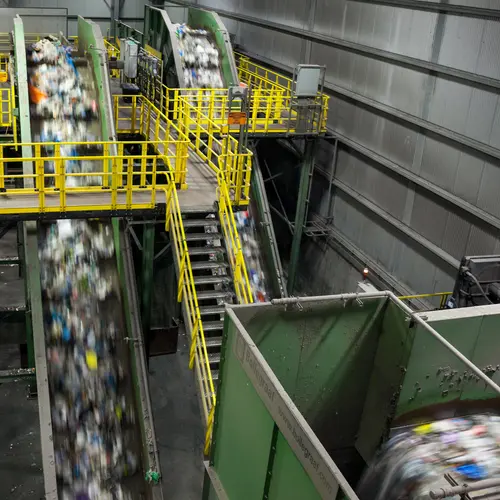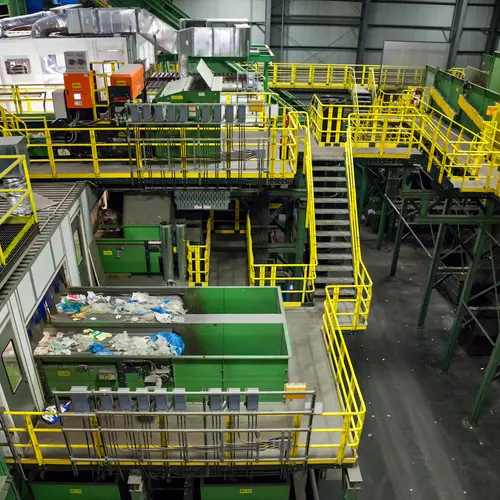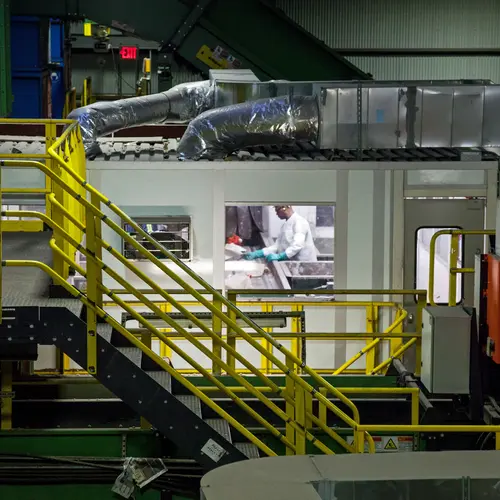The Urban Lens: The surprising beauty of Sunset Park’s Sims Municipal Recycling Facility

All photographs © James and Karla Murray for 6sqft
6sqft’s series The Urban Lens invites photographers to share work exploring a theme or a place within New York City. In this installment, we take a look at the inner workings of Sunset Park’s Sims Municipal Recycling Facility, from trash heaps to machinery to a learning center. Are you a photographer who’d like to see your work featured on The Urban Lens? Get in touch with us at [email protected].
The beauty of trash is not often lauded, but out on the Brooklyn waterfront, at Sunset Park’s Sims Municipal Recycling Facility, the process is oddly mesmerizing. En masse, the glass and plastic shards processed in the building’s bowels become a disposable rainbow, the sharp shapes of residential recyclables a testament to the mesmerizing aesthetic of large-scale sustainability.
Sims is located on the 11-acre 30th Street Pier, which also contains the city’s first commercial-scale wind turbine. On Sims’ second story is a recycling education center; surrounding its exterior are a number of nature-harboring reefs, moorings, and native plants; and on the roof is an observation deck. The plant sorts 800 tons of recyclables on 2.5 miles worth of conveyor belts and machines daily, the majority of NYC’s “commingled curbside material,” its site proudly purports. In total, the plant processes 200,000 tons of plastic, glass, and metal a year. Ahead, take a look at the Sims world, where trash is heaped so high it really does look like treasure if you squint.

The plant opened in December 2013 and is a joint function of the Department of Sanitation and the North America Metals business unit of global recycling company Sims Metal Management Limited.

The Department of Sanitation collects roughly 19,000 tons of metal, glass, and plastic over the course of a month. The Sims plant is capable of processing even more recyclables than this.


Where the garbage is kept is known as the Tipping Floor. The trash comes in and out via truck, barge, and rail.

Approximately 240,000 garbage trucks were estimated to be removed from city streets due to the Sims facility’s development and use of barges, according to a fact sheet for the plant.



Sims was developed under former Mayor Bloomberg as part of a sustainable waste management initiative. The city’s contract with Sims Municipal Recycling will last for up to 40 years and the groups, as well as the Department of Small Business Services, have invested over $110 million in the facility’s development.

The processing system is operated by a dozen quality control specialists. Recyclables are compressed into more than a dozen categories of bales which are then sold across the continent.



The Recycling Education Center contains a series of step-by-step interactive exhibits explaining the process of recycling. Both school and adult tours visit the center daily.


Sims Municipal Recycling Facility was redesigned by architect Annabelle Selldorf in 2013. The firm said their goal was to “distinguish it from ordinary big box construction” while “working with a pre-engineered building.” They acheived this by inverting structural elements such as steel girders and lateral bracing on the facade. They also used recycled materials for construction. For example, the site fill was made “from a composite of recycled glass, asphalt, and rock reclaimed from the Second Avenue subway construction.”
Learn more about Sims and find out how to take a tour here >>
© All images taken by James and Karla Murray exclusively for 6sqft. #SimsPix @NYCZerowaste















































